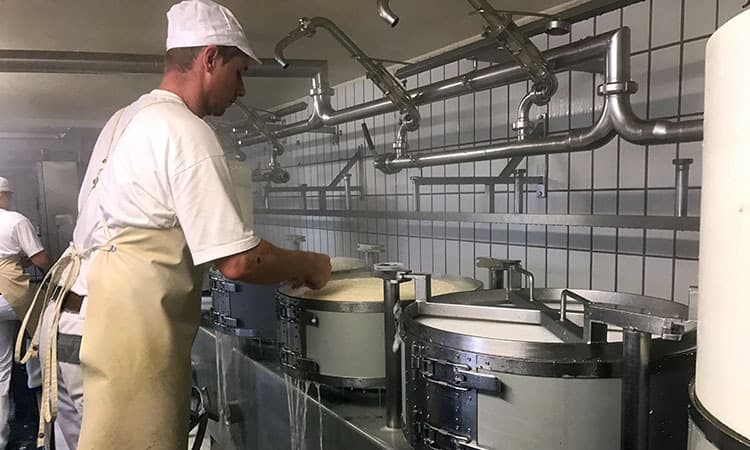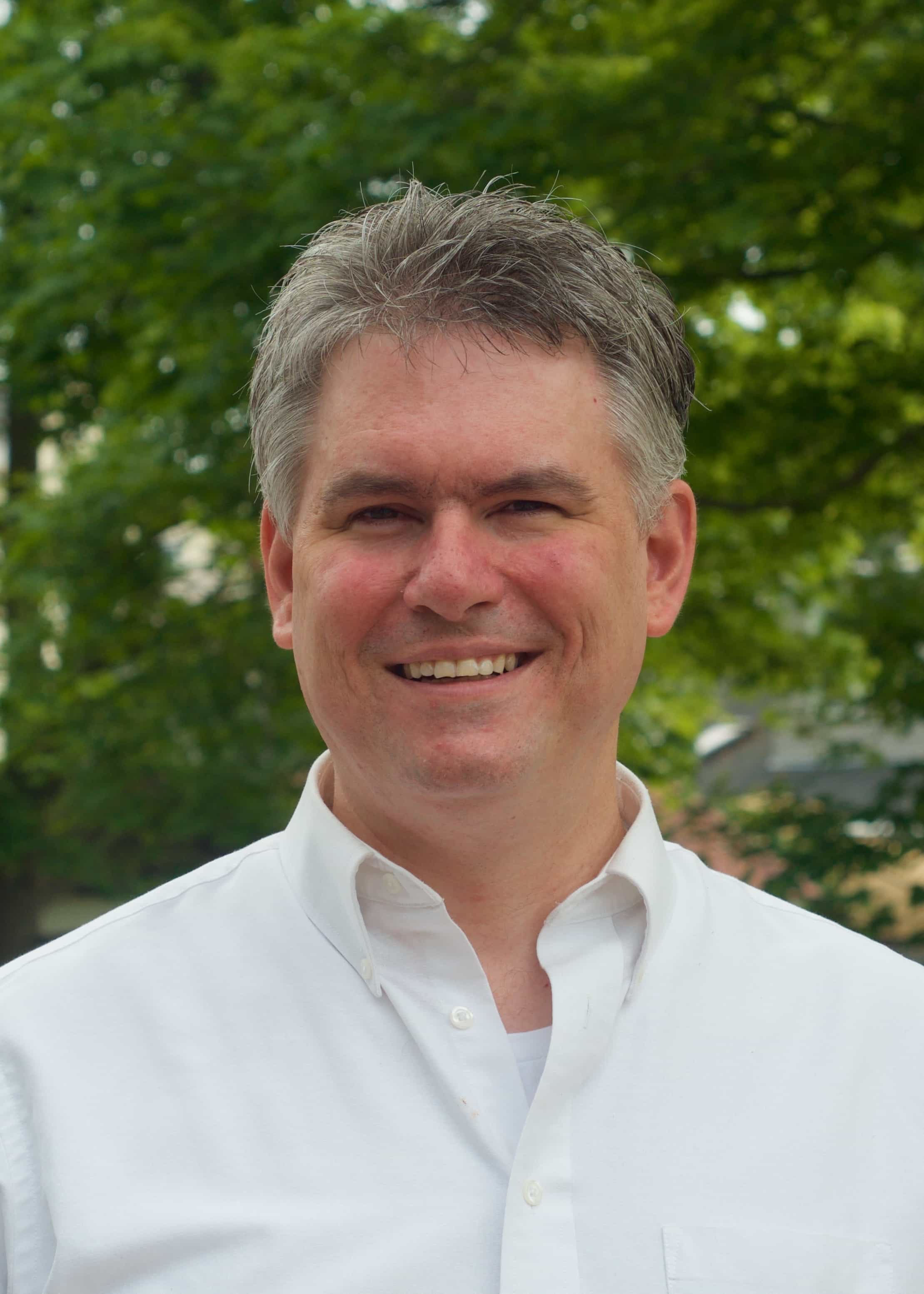
Amongst the rolling hills and quaint chalets of Rueyres-Treyfayes in the canton of Fribourg, Switzerland, Vincent Gapany is known as a bit of a celebrity. His picture adorns the placemats at the nearby Maison de la Gruyère restaurant. He’s a beloved cheesemaker of the Interprofession— an organization dedicated to protecting and furthering Gruyère’s interests globally. And, he makes amazing cheese!
Gapany doesn’t produce milk at his facility. Instead, he works with 10 of the 155 regional village dairies producing milk for the famous Gruyère cheese (of which he produces nearly 160 tons per year). Each of these dairies delivers milk twice a day, as is required by Gruyère AOP regulations. Some arrive in pickup trucks with trailers in tow. Most come by a tractor.
It’s not a far ride. Gruyère milk must originate within 12 miles of where the cheese is made. As the milk arrives, the celebrity springs into action. With every batch of milk, Gapany’s first step is to personally take a sample. He reserves the right to refuse a batch if he thinks it’s not up to his standards. The focus is completely on quality. If the producer disagrees with his judgment, an independent committee is assembled to reevaluate the milk. While this may seem a little confrontational, everyone is content with the system.
The quality of the final cheese is critical, determining its monetary value. Higher-quality wheels earn more money for everyone involved. Lower-quality wheels cost the producer in the form of a penalty. With village production comprising more than 98% of all Gruyère sold, this system helps ensure only the best cheese makes it to market. “If I do not get the best milk, I cannot make the best cheese,” says Gapany.
Additional milk samples will be taken at every stage of the process. This protocol makes it much easier and quicker to research and isolate the source of any problems or contaminations. The small vials are kept for six months as insurance, a period which coincides with the time it typically takes for a wheel to show signs of any problems. As the maker, Gapany is held responsible for any issues during this time.
In general, village cheesemakers are at a higher risk of having production issues because they are mixing milk sources. Alpine producers typically use their own milk and thus have a lower risk of contamination. Beyond the stringent controls and recordkeeping employed, Gapany’s facility practices a thorough and continual cleaning regimen. He estimates spending more than 50% of each day cleaning the environment and equipment.
On average, it takes 350-400 liters of milk to make a single wheel of Gruyère. Gapany’s vats hold up to 3,500 liters, much larger than alpine producers who are required to use 750-liter vessels. Because of this increase he can average nearly 14 wheels a day, compared to the two an alpine dairy will make. As with many alpine producers, any surplus milk is usually turned into the region’s other famous cheese Vacherin Fribourgeois, of which Gapany produces three tons each year.
Living above the dairy Gapany insists it’s not all work, though. There is time for family and personal interests. What does a restless, driven cheesemaker like him do for fun when he’s not making cheese? He cares for his 600 pigs. “It is a hobby,” he casually mentions. “I like the animals. They make me happy.”
Sitting at his small kitchen table with a wedge of six-month Gruyère, fresh croissants, and cups of strong coffee, Gapany smiles when asked what age he prefers to eat his Gruyère at. “Ten months, that is the best.”





